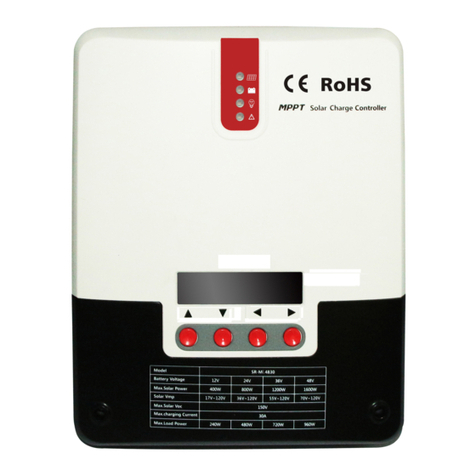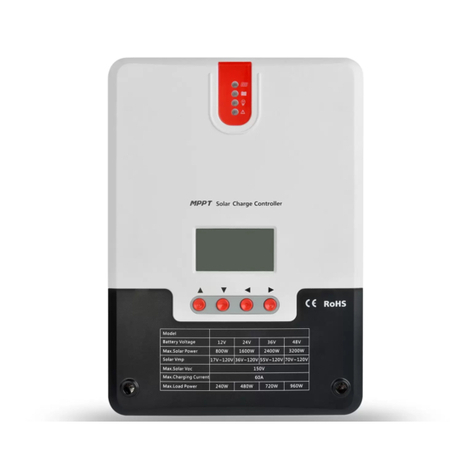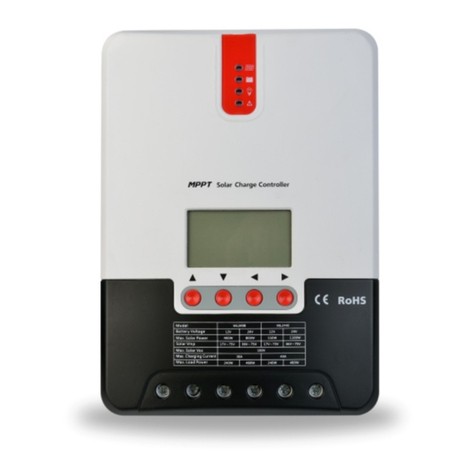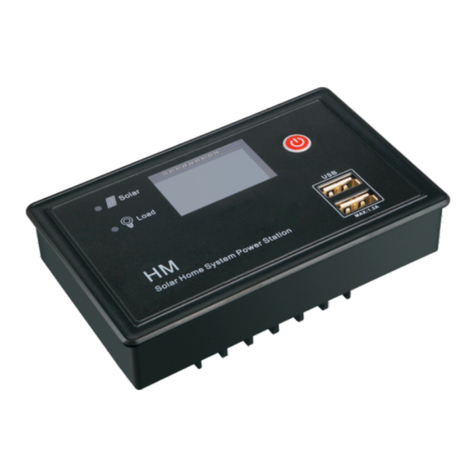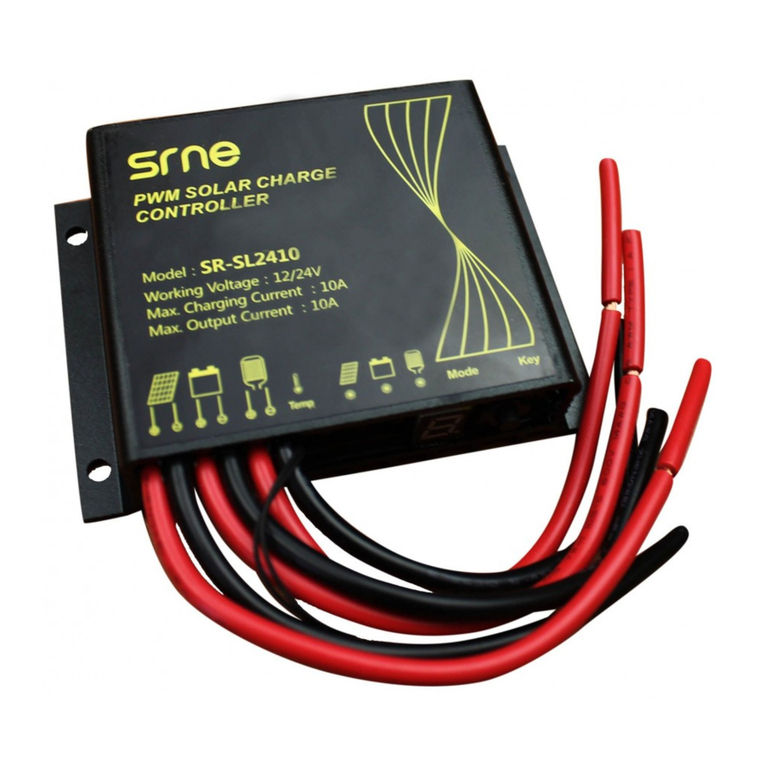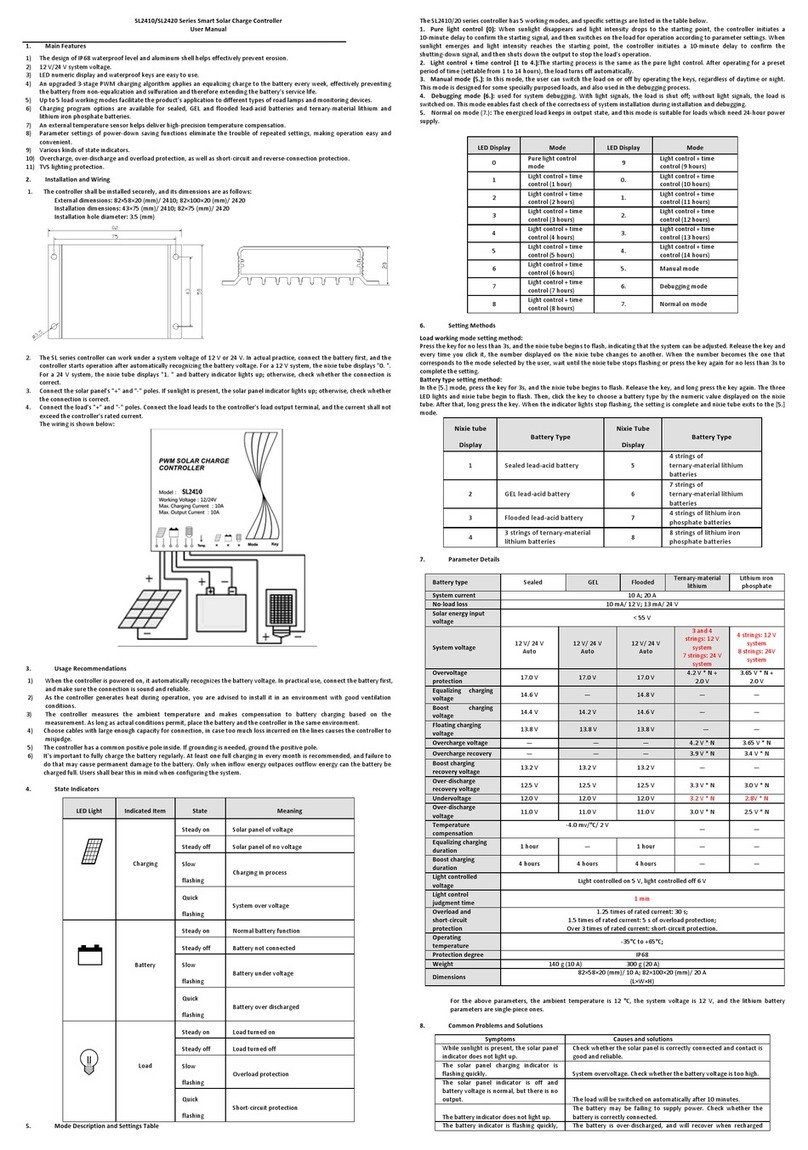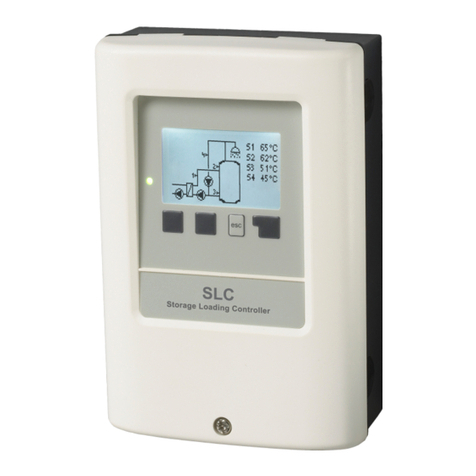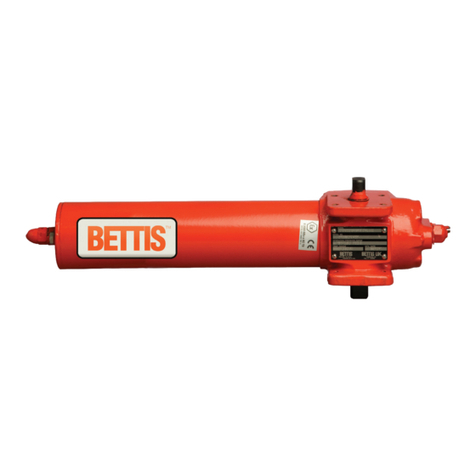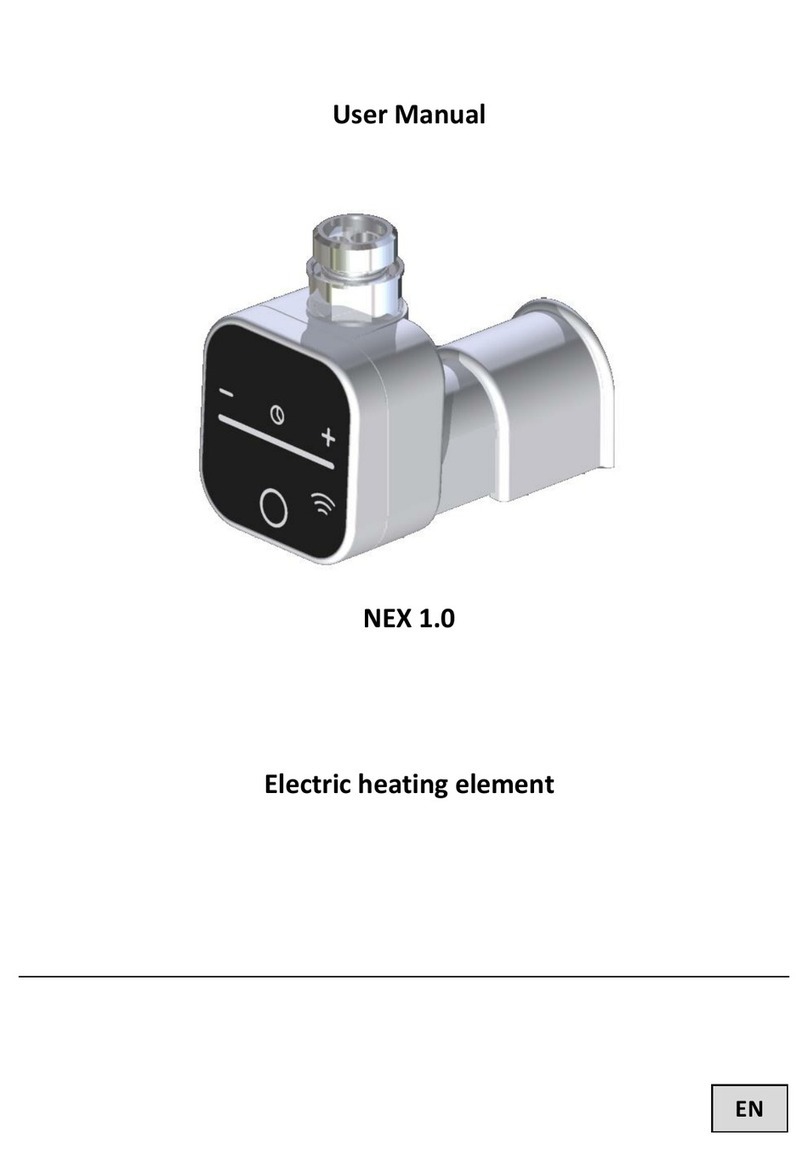Srne ML Series User manual

Maximum Power Point Tracking ML Serial
ML4830/ML4830-LI—ML2440/ML2440-LI
Solar Charge and Discharge Controller User Manual
Model ML4830
ML4830-LI
ML2440
ML2440-LI
Batter Voltage 12V/24V/36V/48V 12V/24V
Max Solar Input Voltage 150V 150V
Charging Current 30A 40A
Discharging Current 20A 20A
Note: ML4830-LI and ML2440-LI can be used for lithium batter charging
and discharging management.

Dear user:
Thank ou for choosing our product!
Safet Instructions
1. Since the adaptable voltage of the solar charge controller exceeds human safety
voltage, you are advised to read instructions before operation and operate the solar charge
controller after completing safe operation training.
2. There are no parts that need maintaining or repairing inside the solar charge controller.
Users shall not disassemble or repair the controller by themselves.
3. Please install the solar charge controller indoors, avoid exposure of components, and
prevent water from entering the controller.
4. Please install the solar charge controller in a well ventilated place, for the temperature
of the cooling fin can be very high during operation.
5. You are recommended to install appropriate insurance or circuit breaker outside the
solar charge controller.
6. Before installing or adjusting the connecting wire of the solar charge controller, make
sure that the photovoltaic array wire and insurance or circuit breaker near battery terminal are
disconnected.
7. After installation, check whether all line connections are solid. Bad connections may
cause hazards due to heat accumulation.
Warning: indicates risk operation. Securit preparation is required before
operation.
Note: indicates destructive operation.
Tip: indicates advice and tips for the operator.
Contents
1. Product Introduction..............................................................................................................3
1.1 Product Overview and Features...............................................................................................................3
1.2 Product Features.......................................................................................................................................6
1.3 Introduction of the Maximum Power Point Tracking Technology...........................................................6
1.4 Introduction of Charging Stages...............................................................................................................8
2. Product Installation..............................................................................................................11
2.1 Installation Precautions..........................................................................................................................11
2.2 Wiring Specifications.............................................................................................................................12
2.3 Installation and Wiring...........................................................................................................................13
3. Product Operation and Display............................................................................................16

3.1.LED Indicator.........................................................................................................................................16
3.2 Buzzer.....................................................................................................................................................18
3.3 Key Operation........................................................................................................................................18
3.4 LCD Starting and Main Interface Display.............................................................................................19
3.5 Load Mode Setting Page........................................................................................................................21
3.6 System Analysis Page.............................................................................................................................23
3.7 System Log Page....................................................................................................................................23
3.8 Parameter Setting Interface....................................................................................................................24
3.9 Production Information Page..................................................................................................................25
4. Product Protection Function and System Maintenance.......................................................26
4.1 Protection Function Introduction............................................................................................................26
4.2 System Maintenance...............................................................................................................................27
4.3Abnormality Display and Alarm.............................................................................................................28
5. Product Specification Parameter..........................................................................................29
5.1 Electrical Parameter...............................................................................................................................29
5.2 Parameter Adjustment Range.................................................................................................................30
6. Conversion Efficiency Curve...............................................................................................31
7. Product Size.........................................................................................................................33
1. Product Introduction
1.1 Product Overview and Features
The solar charge controller can monitor generated power of solar panels in real time and
track the highest voltage current value (VI), enabling the system to charge the battery with
maximum power output. Applied to solar off grid photovoltaic systems, the product
coordinates the functions of solar panels, batteries and loads; and is the core control unit of
off grid photovoltaic systems.
The controller uses liquid crystal for the dynamic display of operation status, operating
parameters, controller logs, historical parameters, and control parameters. Users can check all
parameters through buttons, and modify control parameters according to actual needs so that
different system requirements are met.
The controller adopts standard Modbus communication protocol, making it easy for users
to view and modify system parameters by themselves. We provide free monitoring software,
which delivers the greatest possible convenience for users to satisfy different needs of remote
monitoring.
The inside of the solar charge controller is equipped with comprehensive electronic fault
self detecting function and powerful electronic protection function, therefore avoiding damage
to product components resulting from installation errors and system faults to the greatest

extent.
Product features:
Advanced double peak or multiple peak tracking technology. When the panel has a◆
shadow block or a part of the panel is damaged, I V curve shows multiple peaks. The solar
charge controller can still accurately track the maximum power point.
Built in algorithm for maximum power tracking. This significantly raises energy◆
utilization efficiency of photovoltaic systems, with charging efficiency 15% ~ 20% higher than
traditional PWM solar charge controllers.
Combination of multiple tracking algorithms that can track the optimum working point of◆
I V curve accurately in a very short period of time.
MPPT tracking efficiency can be as high as 99.9%.◆
Advanced digital power technology, with circuit energy conversion efficiency as high as◆
98%.
Supporting charging procedures of gel batteries, sealed batteries, open batteries, lithium◆
batteries and other types of batteries.①
Current limiting charging mode. When the power of a solar panel is too large, and the◆
charging current is greater than rated current, the solar charge controller automatically reduces
charging power, thereby making the solar panel work at rated charging current.
Supporting the start of capacitive load instantaneous large current.◆
Supporting automatic identification of battery voltage.◆
LED indicator of malfunction, buzzer alarm, and liquid crystal display of abnormal◆
information. This helps users identify system failures.
Supporting historical data storage for up to 5 years.◆
LCD screen display function. The display enables users to view equipment operation data◆
and status, and modify controller parameters at the same time.
Supporting standard◆ Modbus protocol that meets communication needs on different
occasions.
Built in mechanism of over temperature protection. When the temperature exceeds the◆
preset value, the charging current falls linearly with temperature, therefore slowing down the
rise of controller temperature and avoiding controller damage from high temperature.
External battery voltage sampling function. This function prevents line loss from affecting◆
external battery voltage sampling and ensures greater preciseness of, control parameters.
Temperature compensation functions. Charging and discharging parameters are ◆
automatically adjusted, thereby extending battery service life.
◆TVS lightning protection
Note①:Only the ML LI model supports lithium battery charging and discharging
function.
○

1.2 Product Features
Figure 1 1 Solar Charge Controller Appearance and Interface
○
○
○
○
○
○
○
○○
○
○
○
○
○○○

No. Name No. Name
○Charging Indicator ○Battery “ ” Interface
○Battery Indicator ○Load “ ” Interface
○Load Indicator ○Battery “+” Interface
○Abnormality Indicator ○Load “+” Interface
○Liquid Crystal Display ○External Temperature Sampling Interface
○Operation Button ○External Battery Voltage Sampling Interface
○Mounting Hole ○RS485 Communication Interface
○Solar Panel “+” Interface ○RS232 Communication Interface
○Solar Panel “ ” Interface
1.3 Introduction of the Maximum Power Point Tracking Technolog
The Maximum Power Point Tracking (MPPT) system is an advanced charging technology that
enables solar panels to output more power by adjusting the working state of electrical modules. Due to
the nonlinearity of a solar array, there is a maximum energy output point (maximum power point) on the
curve of the array. Traditional solar charge controllers (switch charging technology and PWM charging
technology) cannot charge batteries at this point, thus unable to obtain the maximum energy of solar
panels. However, the solar energy charge controller equipped with the MPPT control technology can
track the maximum power point of a solar array at any time in order to gain maximum energy for battery
charging.
Take the 12V system for example. The peak voltage of solar panels (Vpp) is around 17V and
battery voltage is about 12V. Generally, when the solar charge controller is charging a battery, the
voltage of solar panel is maintained at about 12V, indicating that the maximum power is not used. MPPT
solar charge controllers provide a solution to that problem by constantly adjusting the input voltage and
current of solar panels, therefore maximizing input power.
Compared with conventional PWM solar charge controllers, MPPT solar charge controllers bring
out the maximum power of solar panels and provide greater charging current. Generally speaking, MPPT
solar charge controllers can improve energy utilization rate by 15% ~ 20% over PWM solar charge
controllers.

PWM充电
U(V)
I(A) P(W)
VP曲线
VI曲线
94.5
81.0
67.5
54.0
27.0
40.5
13.5
0.0
19.616.814.011.28.45.62.80.0
0.5
1.0
1.5
2.0
2.5
3.0
3.5
4.0
4.5
5.0
MPPT点
Figure 1 2 Solar Panel Output Characteristic Curve
Moreover, different environmental temperatures and light conditions lead to frequent changes of the maximum
power point. Our MPPT solar charge controller can constantly adjust parameters according to different
conditions so as to put the system near the maximum working point all the time.
The whole process is completely automatic without any adjustment by users.
光照降 ,电流减小
光照降 ,开路电压减小
U(V)
I(A)
Figure 1 3 Solar Panel Output Characteristic and Lighting Relation
Sunlight reduces and current reduces
Sunlight reduces and open circuit voltage reduces
P(W)
I(A) MPPT Point
PWM Charging
VI Curve
VP Curve

20℃
50℃
70℃
60℃
40℃
30℃
太
阳
板
温
度
I(A)
U(V)
温度降 ,电流不变,
功率增大
温度升高,开路电压减小
Figure 1 4 Solar Panel Output Characteristic and Temperature Relation
1.4 Introduction of Charging Stages
As a stage of charging, MPPT cannot be used separately, but must be combined
with charging modes such as boost charging, floating charging and equalizing
charging to complete battery charging together. A complete charging process
includes: fast charging, maintaining charging and floating charging. The charging
curve is as follows:
Temperature reduces, current remains constant,
and power increases
Solar panel temperature
Temperature increases and open circuit voltage reduces

Figure 1 5Battery Charging Stage
Fast Charging
In fast charging stage, battery voltage is below the preset value (equalizing/boost voltage) of full
voltage. The solar charge controller will perform MPPT charging and provide the maximum solar power
to charge battery. After battery voltage reaches the preset value, the controller conducts constant voltage
charging.
Maintaining Charging
When battery voltage reaches the preset value for maintaining voltage, the
solar charge controller performs constant voltage charging, and this process does
not involve MPPT charging. At the same time, charging current declines gradually
over time. There are two stages in maintaining charging, which are equalizing
charging and boost charging. The two charging processes are not repeated
processes. Equalizing charging is started once every 30 days in a month.
☆Boost Charging
The boost charging stage generally lasts 2 hours by default. Customers can
adjust the duration and preset value of boost voltage according to actual needs.

When the duration times reaches the preset value, the system enters floating
charging stage.
☆Equalizing Charging
Warning: explosion!
Balance opening lead acid batteries may produce explosive gas, and cabins of
the batteries must be well ventilated.
Attention: equipment damage!
Balance can push up battery voltage to a level that may damage sensitive DC
load. Verification is required to ensure that the allowed input voltage of all system loads
is higher than the set value of equalizing charging for batteries.
Attention: equipment damage!
Overcharging or too much gas evolution may damage battery plates and cause
active materials on battery plates to fall off. Damages may be caused if equalizing
charging voltage is too high or equalizing charging lasts too long. You are advised to
carefully read the specific requirements on batteries used in the system.
Some types of batteries benefit from regular equalizing charging, which can stir
up electrolyte, equalizing battery voltage, and complete chemical reaction. Equalizing
charging boosts battery voltage to a level higher than standard complement voltage,
resulting in gasification of battery electrolyte. If it is detected that the solar charge
controller automatically controls the next process to perform equalizing charging,
equalizing charging duration will be 120 minutes (default). Equalizing charging and
boost charging are not repeated in one full charge process. This is to avoid too much gas
evolution or battery overheating.
Attention:
When the system cannot maintain battery voltage steadily at constant voltage

due to installation environment or operation with load, the solar charge controller
performs time accumulation until battery voltage reaches the preset value. After the
cumulative time reaches three hours, the system automatically transfers to floating
charging.
If the clock of the solar charge controller is not calibrated, the controller
performs regular equalizing charging in accordance with its internal clock..
Floating Charging
After a charging stage continues, the solar charge controller reduces battery
voltage by decreasing the charging current, and maintains battery voltage at the
preset voltage value for floating charging. At floating charging stage, the battery
undergoes very weak charging to ensure that the battery is in full charge state. At
floating charging stage, the load can obtain nearly all the solar power. If the load
exceeds the power provided by solar energy, the solar charge controller fails to
maintain battery voltage at floating stage. When battery voltage is as low as the
preset value for improved recovery charging, the system exits from floating charging
stage and re enters fast charging stage.
2. Product Installation
2.1 Installation Precautions
◆ Exert great caution during battery installation. Before installing open lead acid
battery, wear protective goggles. When you are in contract with battery acid liquid,
wash the involved part with water immediately.
◆ Do not place metal objects near battery to prevent short circuit.

◆
When battery is charging, acidic gas can be produced. Ensure that the
environment around is well ventilated.
◆ Battery may generate combustible gas. Keep it away from sparks.
◆ For outdoor installation, avoid direct sunlight and rain infiltration.
◆ Loose connections and corrosive wires may cause extreme heat that melts wire
insulation layers, burns surrounding materials, or even results in fire. Ensure that
connection heads are screwed tight, and wires are better fixed with tightening belts.
Avoid wire shaking and loose connection heads when moving the application.
◆ When the system is connected, the output terminal voltage of components can
be higher than human safety voltage. During operation, use insulated tools and make
sure your hands are dry.
◆ The battery terminals on the solar charge controller can be connected with one
battery or the same set of batteries. Follow up instructions in the manual apply to the
use of single battery. The same instructions apply to a system with a set of batteries
as well.
◆ Please follow battery manufacturers' safety recommendations.
◆ System connecting line is selected according to current density of no greater
than 4A/mm2.
◆ Connect the solar charge controller grounding terminal to the ground.
2.2 Wiring Specifications
Wiring and installation mode must comply with national and local electrical
standard requirements.
Battery and load specifications must be selected according to the rated current.
Refer to the following table for wiring specifications:
Model Rated Rated Battery Wire Load Line

Charging
Current
Discharging
Current
Diameter
(mm2)
Diameter
(mm2)
ML4830 30A 20A 8 5
ML2440 40A 20A 10 5
2.3 Installation and Wiring
Warning: Explosion risk. Do not install the solar charge controller and
open t pe cell in the same closed space. Do not install in closed place where
batter gas ma gather.
Warning: High pressure danger. Photovoltaic arra ma generate ver
high open circuit voltage. Before wire connection, disconnect the breaker or
insurance. Be careful in the process of wiring.
Attention: When installing a solar charge controller, make sure there is
enough air flowing through the cooling fin of the controller. Leave a space of at
least 150 mm up and down the solar charge controller to ensure natural heat
loss through convection. If installed within a closed cabinet, ensure reliable heat
dissipation through the cabinet bod .

Step 1: Selecting an installation location.
Avoid installing solar charge controller in a place where there is direct sunlight, high
temperature or eas water inflow. Ensure the surrounding area of the solar charge controller is well
ventilated.
Step 2: Fixed screw
First place installation guide plate at proper position, then use pen and mark on installation
location, drill four installation holes at marked places of suitable size, and fixe with screw.
Step 3: Fix the solar charge controller.
On the installation surface, use a pen to mark the positions of four mounting holes, and then
move awa solar charge controller. Drill four size-suitable mounting holes at four marked positions,
and fix screws in advance, align fixing holes of solar charge controller to on the four fixed screws,
and then hang it up.
At least
150mm
Hot Air
At least
150mm
Cold Air
Figure 2.1 Installation and Heat Dissipation

Step 4: Wiring
Remove the two screws on the solar charge controller panel, and then start wiring.
For installation securit , we recommend the following wiring sequence. However,
wiring without following this order will not damage the solar charge controller.
LCD
RS485
RS232
TEMP
SENSE
BAT
COMP
Control
1
2
3
8
4 7 9
55 5
6
BAT
Array
LOAD
4.1 External temperature sampling interface connection
4.2 Battery voltage sampling line connection
4.3 Communication cable connection
4.4 Connect power line
Warning: Risk of electric shock! We strongly recommend access insurance or circuit
breaker at photovoltaic array end, load end and battery end, to prevent electric shock from
occurring during wiring or misoperation. Before wiring, ensure that insurance or circuit
breaker is disconnected.
Warning: High pressure danger! Photovoltaic array may generate very high open
circuit voltage. Before wire connection, disconnect the breaker or insurance. Be careful in the
process of wiring.

Warning: Risk of explosion. Short circuit of battery positive and negative terminals
and wires connected to them will cause fire or explosion. Please be careful during operation.
Please connect battery first, then connect load, and finally connect the solar panel,
please follow the connection mode of "+" first and then " ".
4.5 Power On
Tip: ML series solar charge controller only starts the solar charge controller via wiring at
the battery end, but ML LI can start the solar charge controller via power of PV array,. This
applies to starting the solar charge controller and activating lithium battery when lithium
battery BMS is in the protection state and cannot export electricity externally.
When all the power line connections are firm and reliable, recheck whether the wiring is
correct, and whether positive and negative ends are connected reversely. After confirmation,
connect battery fuse or circuit breaker, observe whether LED indicator is lit, and whether LCD
screen displays content. If there is no display, disconnect the fuse or circuit breaker
immediately and recheck whether the circuit connection is correct.
If battery is powered on normally, connect the solar panel. If solar charge controller
charging indicators are on normally or flashing, start battery charging.
When battery and photovoltaic is well connected, then connect load fuse or circuit
breaker. At this time, you can use manual mode to test whether the load On and Off is normal.
See load working mode and operation.
Warning: When the solar charge controller is under normal charging state,
disconnecting battery connection will affect solar charge controller DC load. In a severe case,
the load can be damaged.
Warning: Within 10 minutes after solar charge controller charging stops, battery
reverse polarity operation may damage internal components of the solar charge controller.
Attention:
1)Battery insurance installation site should be as close as possible to the battery end.
Recommended installation distance shall be no more than 150 mm.
2)When solar charge controller is not connected to a remote temperature sensor,
batter temperature is a fixed value of 25 ℃.
3)If the inverter is connected in the s stem, please connect inverter directl with
batter , and do not connect solar charge controller with the load end.
4.6 Close wiring cover
When all wirings of the s stem are well connected, close the wiring cover
and screw screws tight.

3. Product Operation and Displa
3.1.LED Indicator
1
2
3
4
○ PV array Indicator Indicate solar charge controller current charging
mode
○ BAT Indicator Indicate battery current state.
○ LOAD Indicator Indicate load switch and state.
○ ERROR Indicator Indicate whether solar charge controller is currently
normal working.
PV arra Indicator
常亮,最大功率充电
慢闪,提升充电
单闪,浮充充电
快闪,均衡充电
双闪,限流充电
1
2
3
4
5
No. Indication State Charging State
○Stead On MPPT Charging
○Slow Flash
(On 1s, Off 1s, cycle 2s)
Boost Charging
○Single Flash
(On 0.1s, Off 1.9s, cycle 2s)
Floating Charging
○
快闪 Fast Flash
(On 0.1s, Off 0.1s, cycle 0.2s)
Equalizing Charging
○Double Flash
(On 0.1s, Off 0.1s, On 0.1s, Off 1.7s, cycle 2s)
Current
Limited Charging
○Off Night
BAT Indicator :
Indication State Batter State
Steady On Battery Voltage Normal
Slow Flash
(On 1s, Off 1s, cycle 2s)
Battery Over Discharge
Fast Flash Battery Overvoltage
Steady On, MPPT Charging
Slow Flash, Boost Charging
Single Flash, Floating Charging
Fast Flash, Equalizing Charging
Double Flash, Current Limited Charging

(On 0.1s, Off 0.1s, cycle 0.2s)
LOAD Indicator:
Indication State Batter State
Off Load Not Started
Fast Flash
(On 0.1s, Off 0.1s, cycle 0.2s)
Overload/Short Circuit
Steady On Load Normal Output
ERROR Indicator:
Indication State Batter State
Off System Operation No
Abnormalities
Steady On System Abnormal
3.2 Buzzer
After abnormality occurs, the buzzer sends out two short and a long buzzing
sound.
Buzzer Buzzing State Abnormalit T pe
Off System no abnormalities or buzzing for 1 minute and then
stop
Buzzing for 1 minute Battery Over Discharge, Under Voltage, Load Short
Circuit, Over Load, Solar Controller Over Temperature,
and Battery Over temperature
Buzzing for 15 seconds Battery Under Voltage
Constant Buzzing Battery Overvoltage, PV Reverse Connection, PV
Overvoltage
3.3 Ke Operation
▲ Up Menu page up; parameter decrease under
setting mode
▼ Down Menu page down; parameter increase under

setting mode
◄ Return Return to the previous menu
► Confirm Enter submenu; Setting/Save key
3.4 LCD Starting and Main Interface Displa
Starting Interface
During start, the four indicators flash in flow. LCD starts after self check. The model of the solar
charge controller is displayed first, and then battery voltage level is displayed. Voltage level is displayed
according to user selected fixed voltage or voltage automatically identified.
Main Page
Main page has 8 menus, in which menus with sub menus can press setting ke to enter next
menus
No. Page name Page Note Sub-menu
1Charging Page Displa Charging state information real-time displa , which
can displa information of solar panel voltage,
charging state, charging current, batter voltage, and
charging power
2Discharging Load Information
Displa Page
Load state information real-time displa , which can
displa information of batter voltage, load switch
state, discharging current, environment temperature,
and discharging power
③Load Mode Setting Page Load work mode adjustment page Yes
④Manual switch load page The page is available onl when load mode is manual
mode 15, not displa ed in other modes. In this page,
load can be turned on and off from ke s directl .
⑤S stem Anal sis Page S stem anal sis page can view charging AH,
discharging AH, work da s, and s stem abnormalit
information
Yes
⑥S stem Log Page Log page can view solar controller historical
information up to 5 ears at most, including
dail min batter voltage, batter max voltage,
dail charging AH, and dail discharging AH,
and etc
Yes
⑦Parameter Setting Page Parameter settings page can set some
parameters of solar controller, including
Yes

charging voltage, discharging voltage,
temperature compensation coefficient,
communication baud rate, and etc
⑧Product Information Product information can view solar controller
serial number and version information
Yes
①Charging Page Displa
②Discharging Displa Page
③Load Mode Setting Page
④Switch load page (can be seen when load mode is manual mode 15 )
Solar Panel Voltage Charging State Charging Current
Battery Voltage Charging Power Charging Page Indicator
Battery Voltage Load On/Off State
Discharging Current
Environment Temperature Discharging Power Discharging Page Indicator
Other manuals for ML Series
1
This manual suits for next models
4
Table of contents
Other Srne Controllers manuals
Popular Controllers manuals by other brands

GOK
GOK ES2000 Assembly and operating instructions
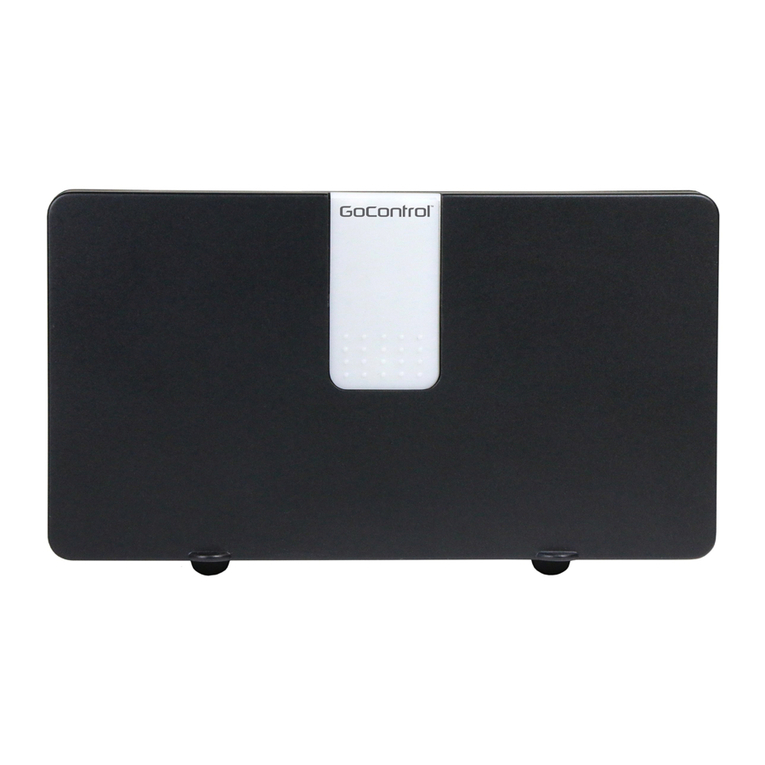
Nortek Security & Control
Nortek Security & Control GoControl WI15VZ-1 instructions

RLE Technologies
RLE Technologies SeaHawk LD5200 quick start guide
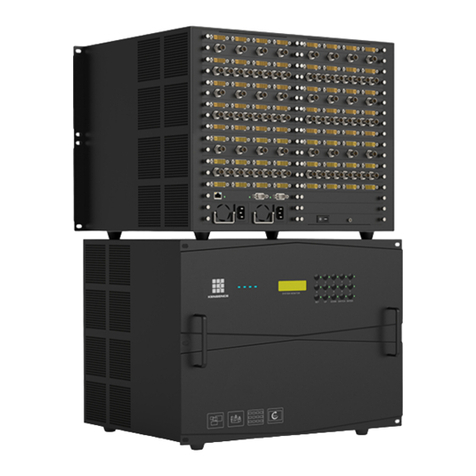
Brightlink
Brightlink 4U manual
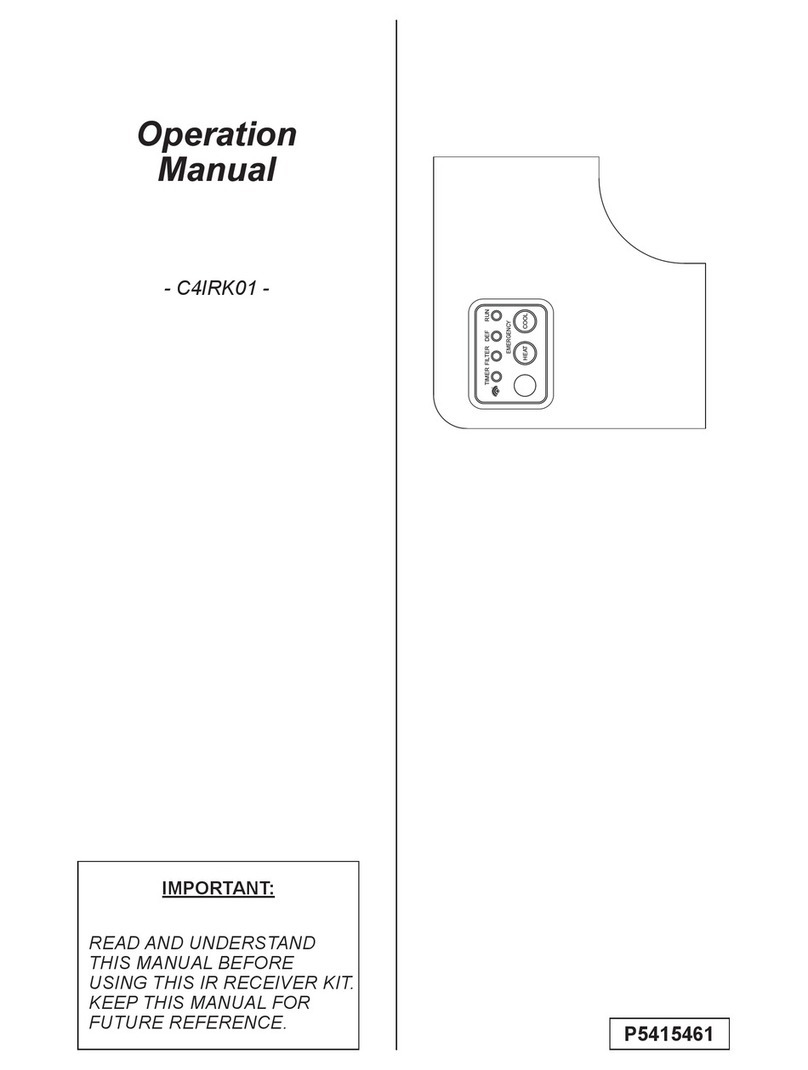
Johnson Controls
Johnson Controls Hitachi C4IRK01 Operation manual

RECO
RECO RM-BV4 Micro DP Documentation
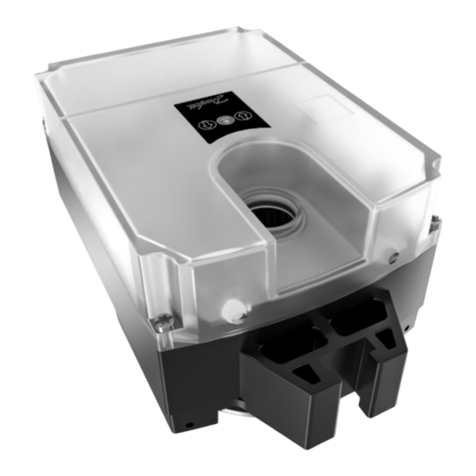
Danfoss
Danfoss AMEi 6 iSET operating guide
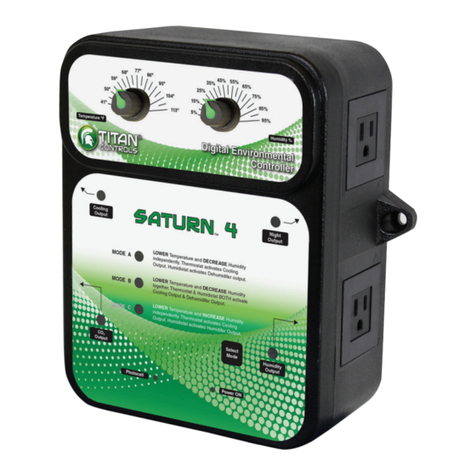
Sunlight Supply
Sunlight Supply TITAN Controls Saturn 4 instruction manual
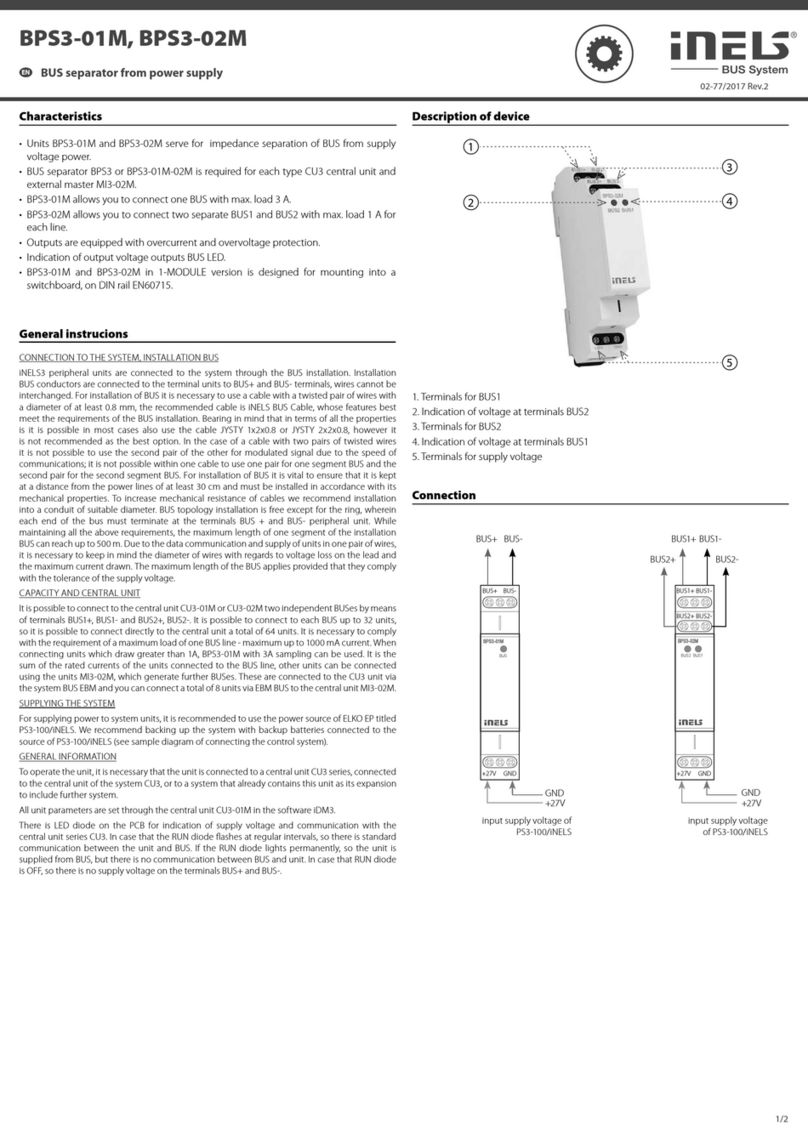
Elko
Elko iNels BPS3-02M quick start guide
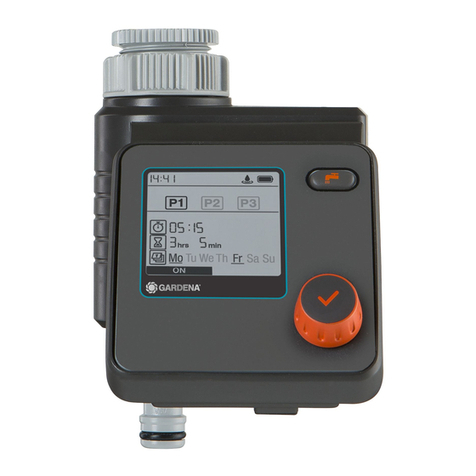
Gardena
Gardena Select 1891 Operator's manual
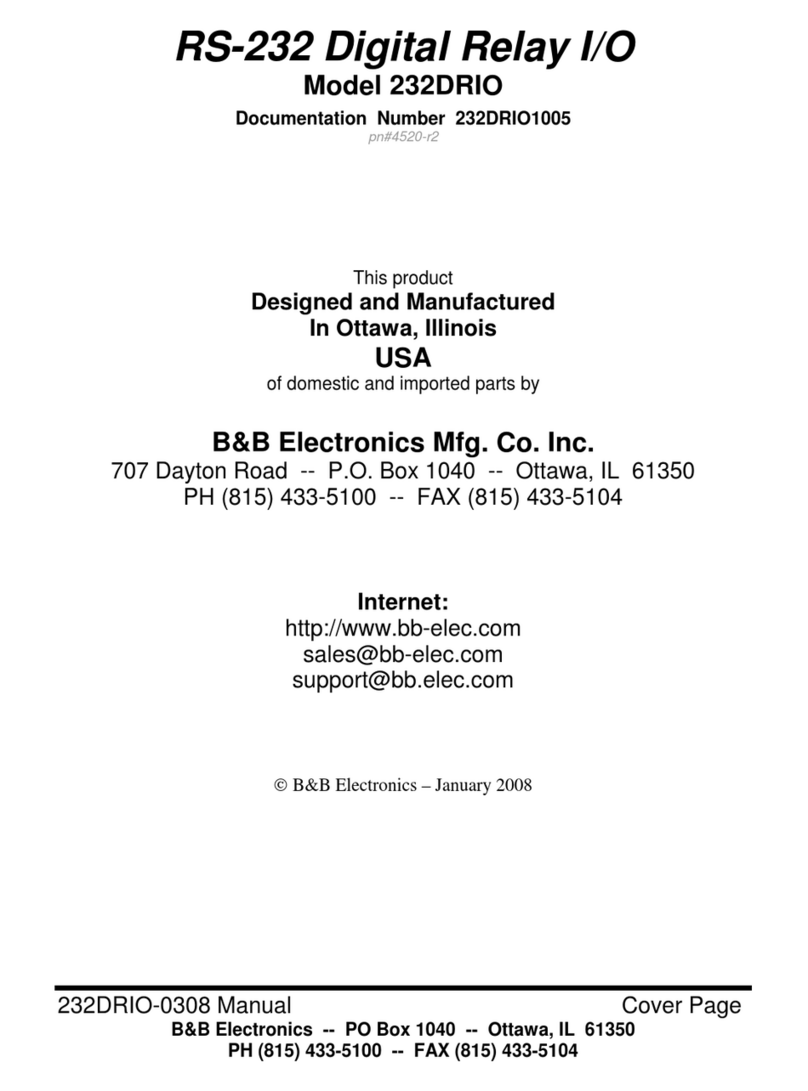
B&B Electronics
B&B Electronics RS-232 Digital Relay I/O 232DRIO user manual
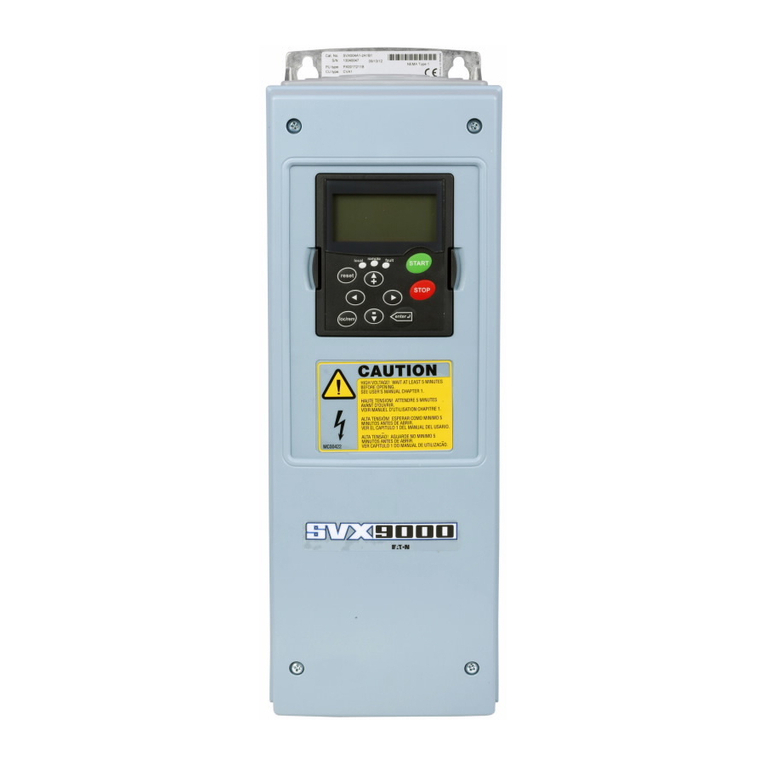
Eaton
Eaton OPTE9 installation manual



